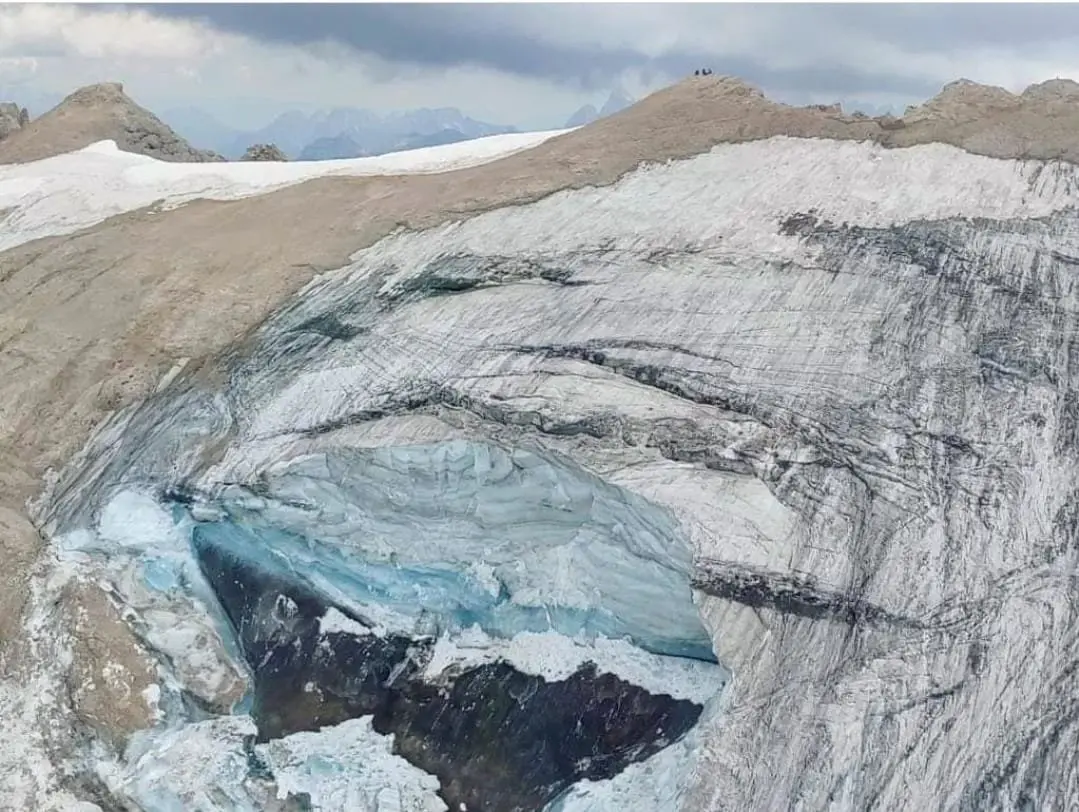
The rescue and recovery effort continues in the Italian Alps almost a week after a glacier collapsed, injuring and killing hikers and leaving others missing amid the rubble.
On Sunday, July 3rd, just before 2 p.m., a mammoth chunk of the glacier atop Mount Marmolada hurled down the mountain at around 186 mph, killing at least 7 hikers and injuring 8 others. Nineteen more were reported missing, according to Italian media. Politico reported on July 7th that the death toll had risen to 9 with 3 people still missing, while rescue and recovery efforts were overshadowed by the danger of more ice falling from the summit. The mountain is in South Tyrol, near the town of Canazei.
According to Reuters, the first rescuers to respond described arriving on the scene of an “enormous avalanche,” where they immediately found people injured and others who were dead.
Nature had concocted a recipe for a disaster that no one saw coming.
“The specific event of the Marmolada will be remembered as a sort of epiphany that reveals the new conditions of the mountains and of alpine glaciers,” Giovanni Baccolo, a researcher at the University of Milan, told Politico. “So, starting from now, we also know that some glaciers that were not considered a menace, now, they can potentially produce some problems.”
If current weather trends—both long- and short-term—continue, scientists expect more collapses like this one in the Alps.
“For too many weeks extreme temperatures at high altitudes have been recorded, in this case on a dying glacier that, being below 3500 m above altitude, is totally imbalanced with the new climate we are experiencing,” Renato. R. Colucci, president of Adriatic-Alpine Meteorological Society and glacial researcher told Corriere Alpi “There will be more similar situations during this and the coming summers. The alpine cryosphere is in a paroxysmal phase of shrinkage and disappearance, everything is happening in a more rapid and catastrophic way, until the ice is gone, or almost, within a few decades. “
Glacial melt has been going on for decades, but scientists, too, were also caught off guard by the avalanche. There are 4,000 glaciers in the Alps, and, though general trends are well known, the intense monitoring required to predict a moment of disasters is impossible to do for all glaciers.
Marmolada is the highest peak in the Dolomite Mountains, but its glacier has been melting for years. Research published in 2019 showed it had lost 30% of its ice mass between 2004 and 2014. At an elevation of 3,300 metres, the temperatures at the summit are usually below freezing throughout the spring, but this year was an exception. Even at the apex of the Marmolada, spring temperatures reached and stayed above freezing. Then an intense heat wave hit in early summer, the same that has nearly dried up the Po River. Scientists at the Adriatic-Alpine Meteorological Society theorise that water flows at its base are destabilising the glacier, loosening the gigantic chunk of ice and rock.
For high mountain hikers and adventurers, unsafe snow conditions are well understood and anticipated, but humanity has far less experience with melting glaciers. Politico reports that two of those still missing were experienced professional mountain guides, who, according to a family member, would never have gone up the peak if they had thought it was unsafe.
The repercussions of this disaster, and potential others like it, resound also in local communities close to the glaciers. Not only do 14 million people live in the Alps, but tourism is often the economic motor for mountain towns. Immediately following the news of the disaster, tourists began to clear out and stay away from Rocca Pietore, a commune on Mount Marmolada.
Italian officials have pledged to investigate the incident and make recommendations for public safety. Hopefully, the learning curve will be short.